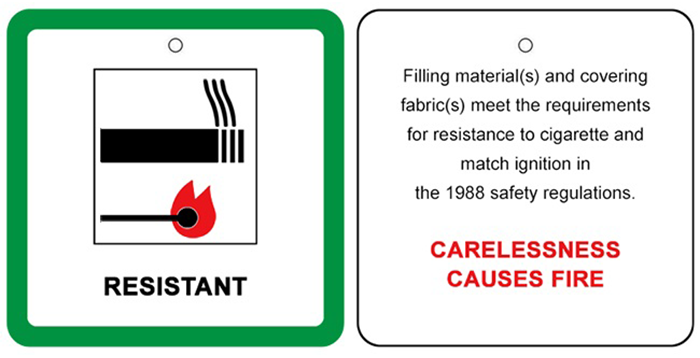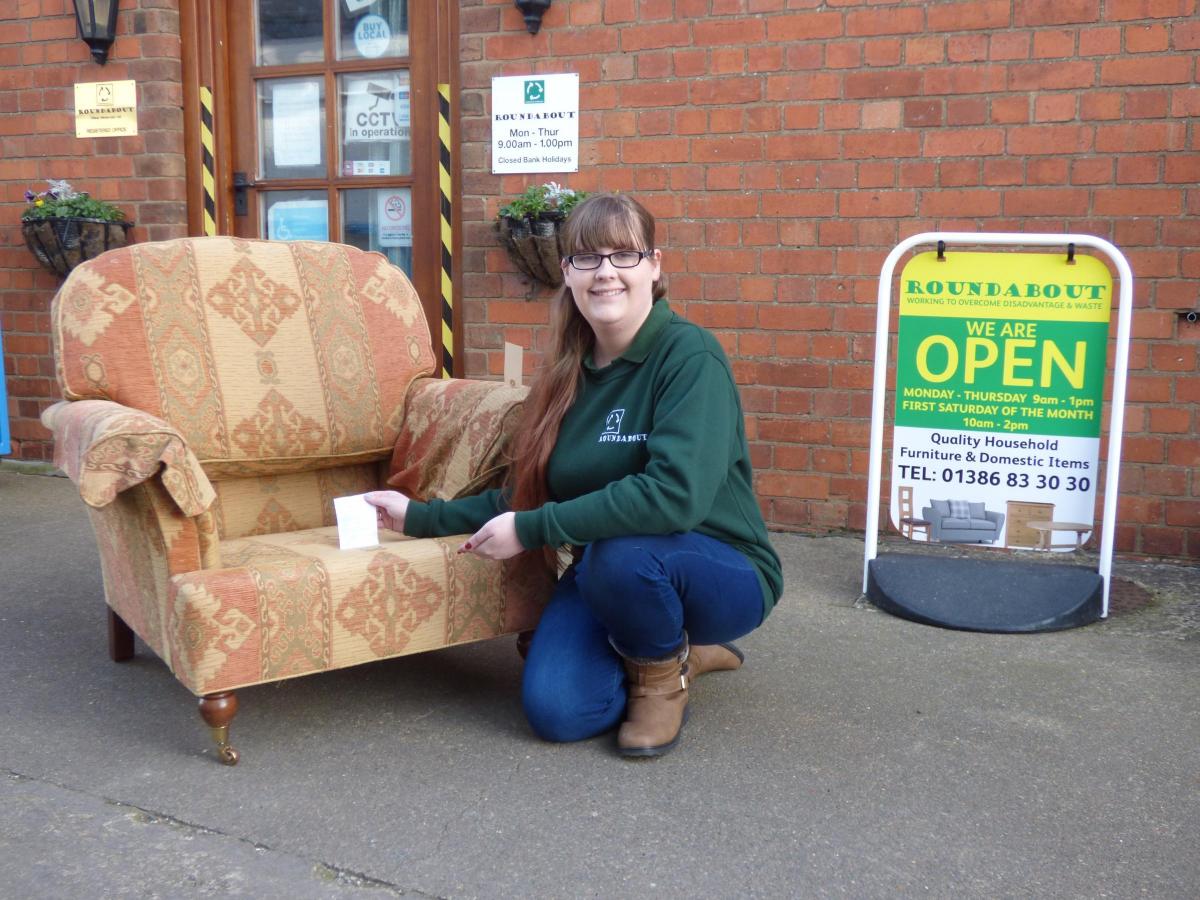Who Will Take Furniture Without Fire Labels" delves into the challenges homeowners face when trying to dispose of or donate furniture that lacks fire safety labels, a common requirement for many charities and disposal services. You'll discover practical advice on alternative ways to responsibly recycle or repurpose these pieces, ensuring they don't end up as environmental waste. This guide empowers you with the knowledge to make informed, eco-friendly choices when dealing with unlabeled furniture, addressing both safety concerns and sustainability efforts. Have you recently found yourself in a bit of a pickle, wondering who would be willing to take that piece of furniture you cherish, but which is missing fire labels? You aren't alone! This is a common question, especially when you're trying to declutter or make room for some new additions to your household. Here, we'll delve deep into understanding the significance of fire labels, the implications of missing labels, and who exactly might take furniture without them. So, sit back, grab a cup of coffee, and let's unravel this puzzle together.

This image is property of www.coopersfire.com.
Understanding Fire Labels
Fire labels are more than just tiny tags attached to your furniture cushions. They play a crucial role in ensuring the safety of your living environment by indicating whether the upholstery complies with fire safety standards. Typically, in many countries, furniture must meet specific fire resistance regulations before it can be sold or distributed, and these labels act as proof.
The Importance of Fire Labels
Having fire labels on your furniture is essential, not only for your peace of mind but also to meet legal requirements. These labels indicate that the item has undergone and passed rigorous testing to ensure it doesn’t easily catch fire, offering a layer of safety for you and your family.
Legal Implications
In many regions, especially in places like the UK and EU, strict regulations govern the sale and distribution of furniture without fire labels. Selling or donating furniture that doesn’t meet these standards can result in hefty fines and legal action. So, understanding the legal framework is vital if you're considering letting go of such furniture.
| Location | Regulation | Potential Consequences for Non-Compliance |
|---|---|---|
| UK | Furniture and Furnishings (Fire Safety) Regulations 1988 | Fines, legal action, confiscation of items |
| EU | Various national regulations aligning with EU Directive | Fines, legal action, confiscation of items |
| US | California TB 117-2013 standards (for example) | Fines, inability to sell, legal liabilities |
Options for Furniture Without Fire Labels
Now that we understand the significance of fire labels, the real question is, "Who will take furniture without fire labels?" Well, the situation isn't entirely bleak. While challenging, there are a few avenues you might explore.
Charitable Organizations
Certain charitable organizations, especially those focusing on reselling items for the disadvantaged, might take furniture without fire labels, particularly if they refurbish or modify items before distribution. It’s essential, however, to be upfront about the absence of labels and confirm the organization’s policy.
Recycling Centers
Many local recycling centers accept items that can't be sold or donated due to missing fire labels. While your furniture might not avoid being dismantled, this option ensures that materials are reused or disposed of responsibly.
Upcycling Enthusiasts
There's a growing community of upcycling enthusiasts who transform old furniture into new, beautiful pieces. Contact your local craft or DIY groups to see if anyone might be interested in taking your unlabeled furniture off your hands.
Friends and Family
Sometimes, the simplest solutions are the best. Ask around within your circle of friends and family. They might be less stringent about fire labels and more appreciative of a good piece of furniture that still has plenty of life left in it.
Selling Furniture Without Fire Labels
What if you want to sell the furniture? Unfortunately, selling it might be trickier due to legal restrictions, but not impossible if you follow some guidelines.
Private Sales
You can try selling your furniture in private transactions. Platforms like Facebook Marketplace or Craigslist allow you to reach potential buyers directly. Be transparent about the missing fire labels and price the item fairly to attract buyers.
Online Marketplaces
Certain niche online marketplaces cater specifically to second-hand furniture or antiques where the fire label concern might not be as stringent. Researching and finding the right platform can help you successfully sell your items.
Informal Sales
Yard sales or garage sales can be a great way to get rid of furniture without fire labels. Residents in your community might be more interested in a good deal than compliance with fire safety regulations, especially for items used in non-residential settings like garages or outdoor spaces.
Legal Considerations
Before you decide to sell or donate, familiarize yourself with local regulations to avoid any legal pitfalls.
Checking Local Laws
Different regions have different laws regarding the sale and distribution of furniture without fire labels. A little research can save you from potential fines or legal troubles.
Documentation
Even if fire labels are missing, maintaining any original purchase receipts or product descriptions can sometimes help ease the concerns of potential buyers or recipients.
This image is property of www.eveshamjournal.co.uk.
Preparing Furniture for Donation or Sale
You want to present your furniture in the best possible light, regardless of the label situation. Here are some tips to make it more appealing.
Clean Thoroughly
A clean piece of furniture speaks volumes. Vacuum, wipe down surfaces, and remove any stains to make your furniture look presentable.
Minor Repairs
Fixing small issues like loose screws, minor scratches, or fabric tears can significantly improve the value and appeal of your furniture.
Provide Detailed Descriptions
When listing for sale or donation, provide a detailed description. Mention the dimensions, material, age, and any noteworthy features. Transparency builds trust and increases your chances of finding a new home for your furniture.
Environmentally Friendly Disposal
What if you can't sell or donate the furniture? Disposing of it responsibly is the next best option.
Local Waste Disposal Services
Many municipalities offer bulk waste disposal services. Check with your local waste management office for scheduled pickup dates and guidelines on how to prepare your furniture for disposal.
Eco-Friendly Disposal Companies
Some companies specialize in environmentally friendly furniture disposal. They ensure that your item is either recycled or disposed of in a way that minimizes environmental impact.

This image is property of images.squarespace-cdn.com.
Conclusion
Finding someone to take your furniture without fire labels can be challenging but not impossible. Whether it's through donation, sale, or responsible disposal, many avenues can help you ensure your furniture finds a new home or is disposed of in an eco-friendly manner. Remember to keep safety and legality in mind, and you'll navigate this process smoothly.
Now that you're equipped with all this information, you're ready to make a well-informed decision. Good luck, and may your furniture find a great new home!





